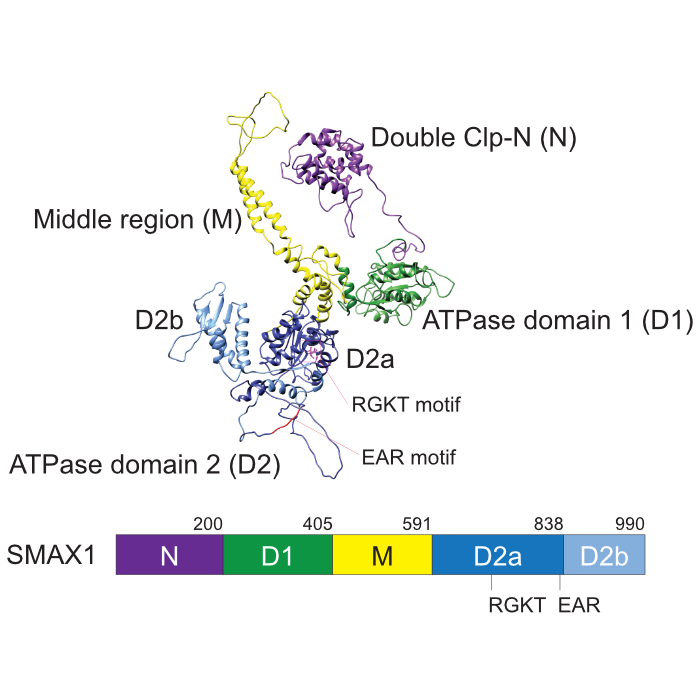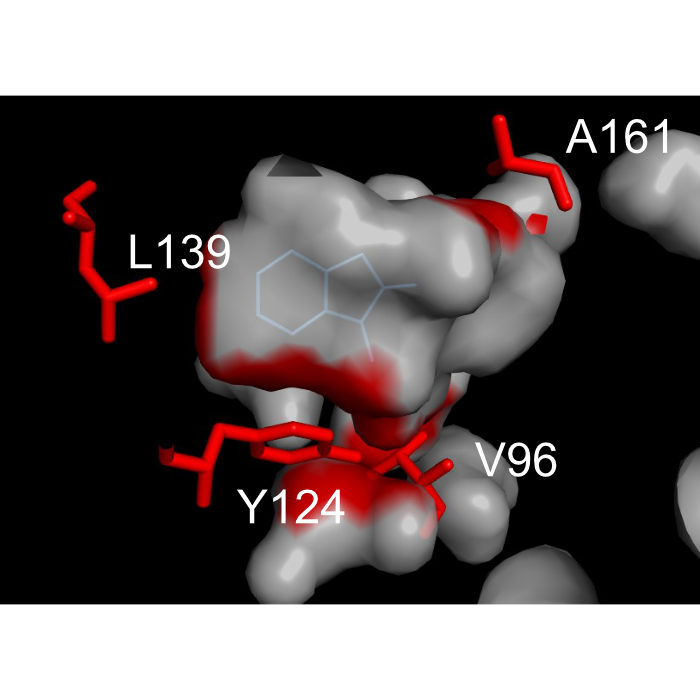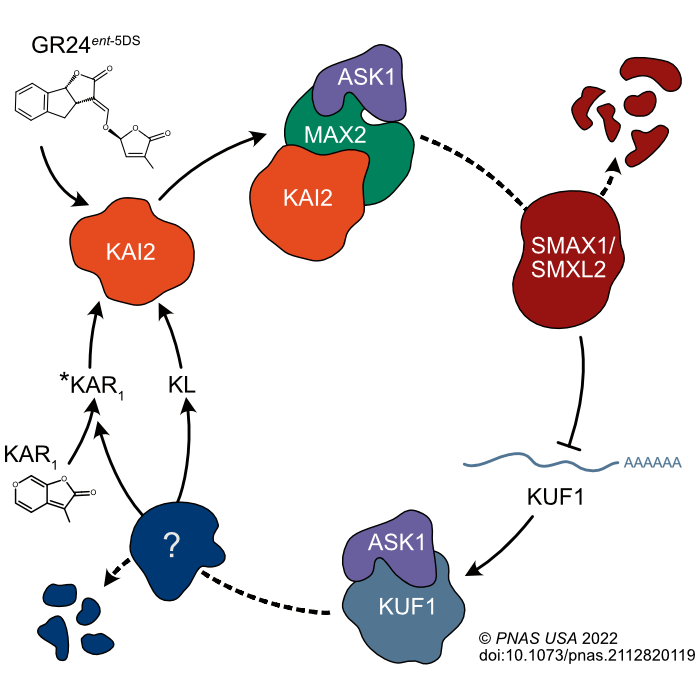Introduction
Karrikins are butenolide molecules found in the smoke and char of burned plant material. Karrikins can be produced from pyrolysis of cellulose and simple sugars. Karrikins promote germination of many plants that grow after fire (but, they are not the only chemicals in smoke to do so!).
Strigolactones are another class of butenolide molecules that can promote germination. Strigolactones are hormones in plants, but are also sent into the soil by roots, especially when the availability of nitrogen and/or phosphorus is low. There, strigolactones encourage beneficial fungi to form a symbiotic interaction with roots that helps fix the nutrient deficiency. However, some parasitic plants are able to use strigolactones as a way to sense a host is nearby. The parasites will germinate and/or grow toward the host root, ultimately forming a connection that lets them steal nutrients.
In one sense, karrikins indicate that plants are absent from the local environment, while strigolactones indicate they are present. These chemicals can provide useful information to a seed about whether it is a good time to germinate.
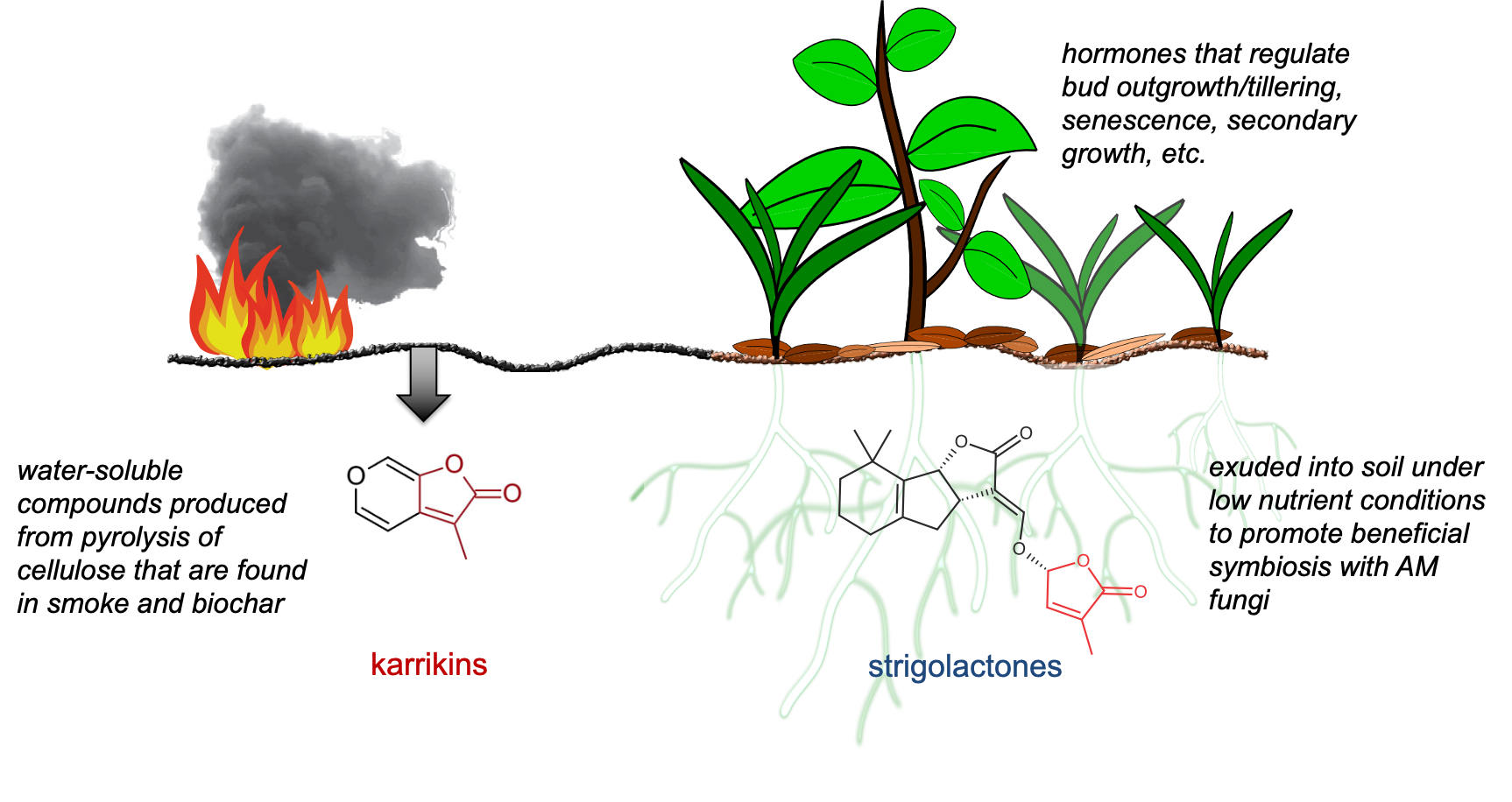
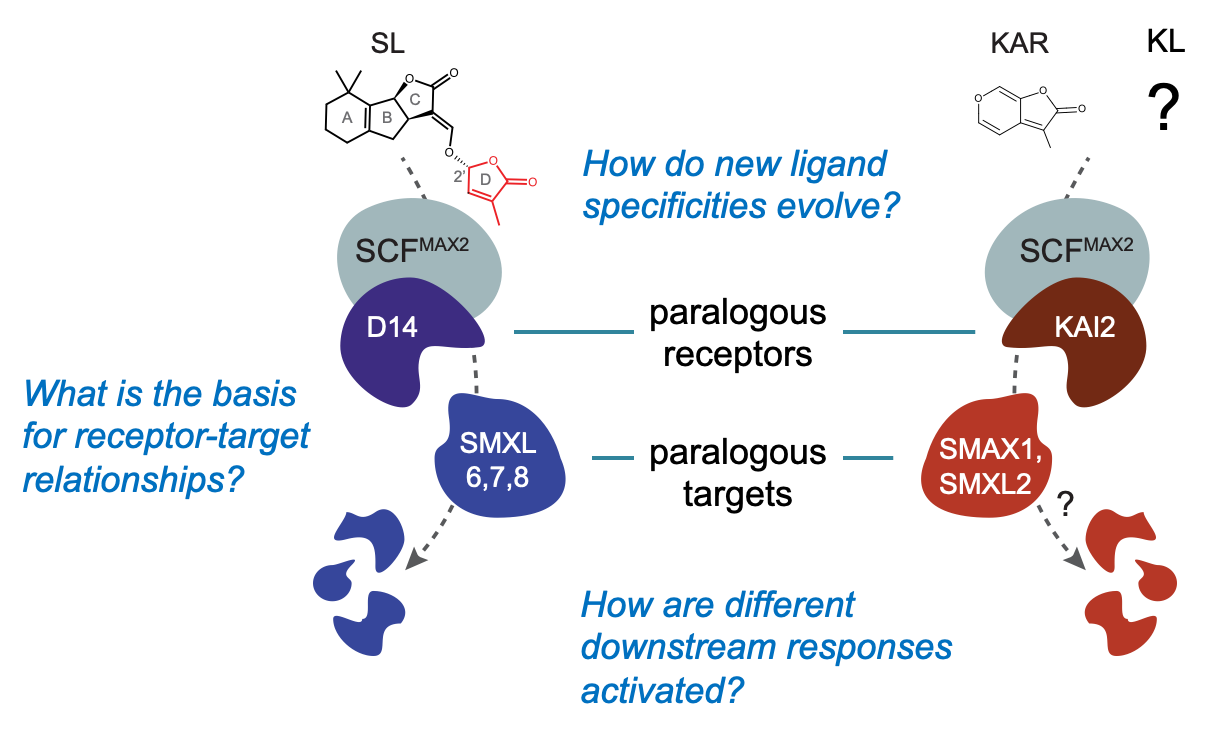
Karrikins and strigolactones regulated more than just germination, and in most cases they affect plant growth in different ways. Nonetheless, the way in which plants sense and respond to karrikins and strigolactones is very similar!
Similar to several other plant hormone signaling mechanisms, karrikin and strigolactone signaling involves degradation of proteins. The F-box protein MAX2 forms part of an SCF-type E3 ubiquitin ligase complex. This job of this complex is to attach chains of ubiquitin peptides to proteins, which marks them for rapid degradation. MAX2 gives the SCF complex specificity in which proteins it targets. In strigolactone signaling, an enzyme, D14, binds and breaks down strigolactone. This causes D14 to interact with MAX2 and SMXL6, SMXL7, and SMXL8 proteins. SMXL6/7/8 are marked with ubiquitin and destroyed, initiating downstream transcriptional changes. Similarly, karrikins cause activation of KAI2, which then works with MAX2 to target SMAX1 and SMXL2 proteins for degradation. It is also likely that KAI2 senses a chemical in plants, KAI2 ligand (KL), which remains undiscovered.
D14 and KAI2 are very similar sister proteins. Likewise, SMAX1 and SMXL proteins are part of the same small family. We are interested in how such similar signaling mechanisms regulate plant growth in different ways, and how evolution of these systems led to adaptations like post-fire or host-stimulated germination. We are also interested in how plants make strigolactones and KL, and how they modify karrikins into a signal that KAI2 can recognize.
Major Research Areas
We gratefully acknowledge funding from National Science Foundation grants IOS-1350561 (2014-2019), IOS-1557962 (2016-2019), and IOS-1856741 (2019-2022)

